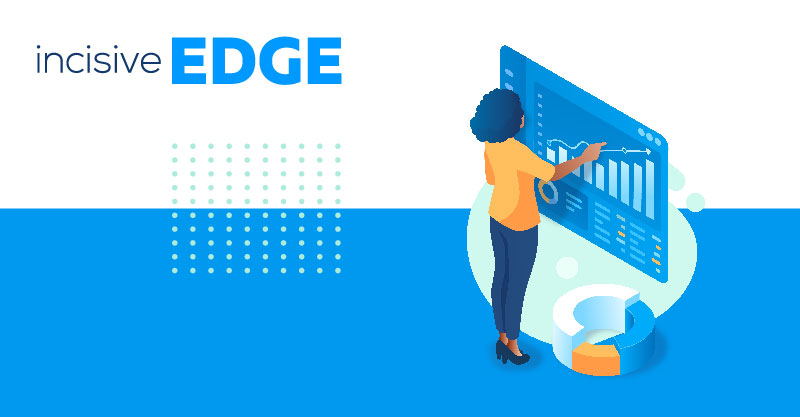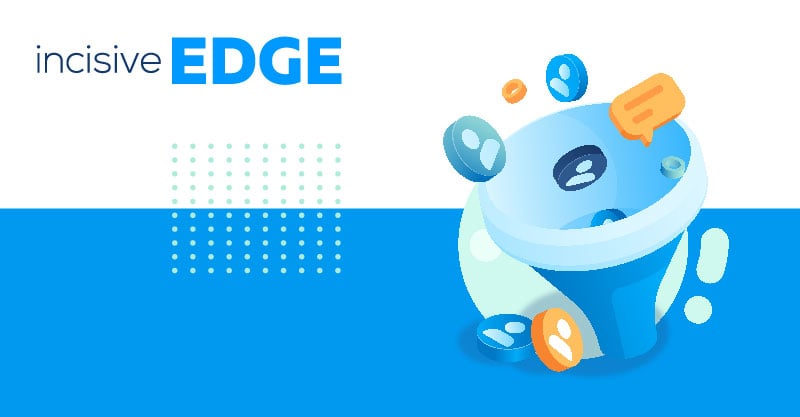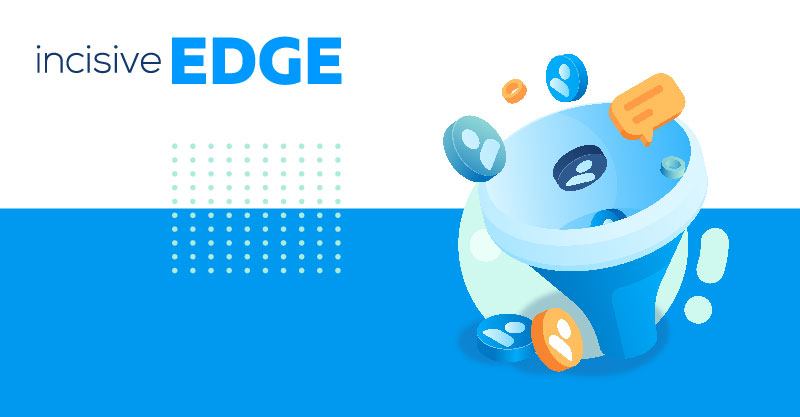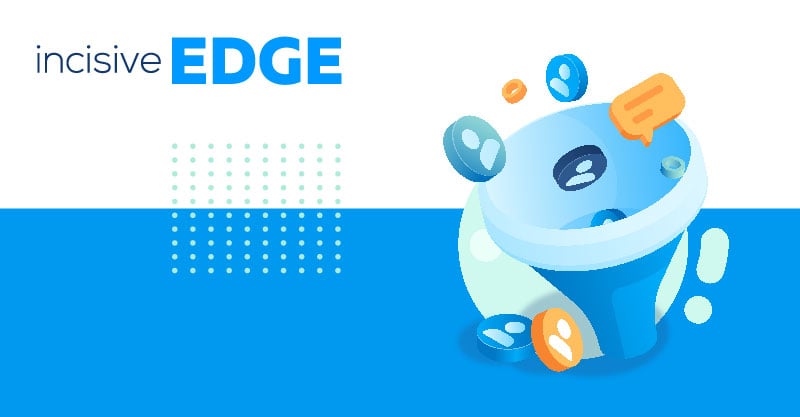This year marks the start of an innovative year for inbound marketers and marketers in general, as we say goodbye to some traditional ideas and usher in modern ones. It’s out with the old marketing tactics and in with the new.
Campaign Monitor asked six industry experts to make predictions about email marketing trends, email marketing strategy and email marketers in the year ahead. A trend emerged as experts shared that this year is all about getting to know your subscribers on a micro-level and embracing the technology that can make the personalization process easier.
Take a look at these six email predictions:
1. Say goodbye to the traditional marketing funnel
According to Samantha Anderl, Senior Director of Acquisition Channels at Campaign Monitor, our idea of the marketing funnels needs to be adjusted.
For years, marketers have subscribed to a traditional, cone-shaped marketing funnel that showed how a potential customer becomes a loyal one. Here's what it looked like:
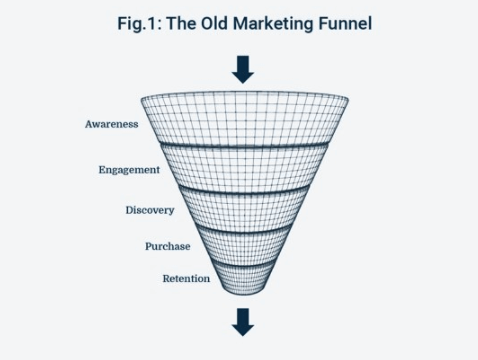
Customers all started in the awareness phase, moving on to engagement and discovery before making a purchase and becoming a lifelong customer. It's neat, tidy and not at all how things work anymore.
With the growth of so many different digital channels, including email marketing campaigns, every customer's journey is unique. Marketers have to adapt. In the new funnel, customers can come and go at various stages with the goal of maximising a customer's lifetime value (rather than simply making one sale). Crafting compelling subject lines is crucial for the success of an email marketing campaign, reflecting an evolving email marketing trend.
Here's what the new funnel looks like:
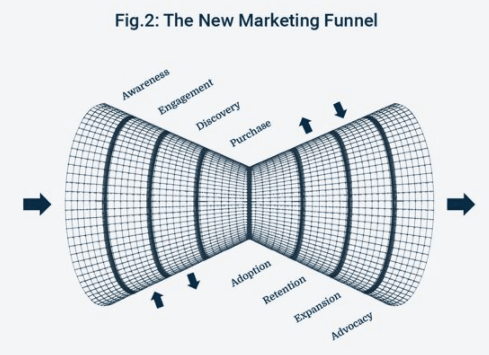
In 2018, it will be up to marketers to deliver personalised, targeted messages to develop long-term relationships with customers at every touch point.
Check out the following articles to learn more about email marketing predictions:
- How To Write More Effective Emails With AI
- How to Craft Winning ABM Email Campaigns for Your Business
- What Are the 3 most effective types of Inbound Marketing?
2. Automation takes the driver's seat
Automation will be taken to a whole new level in 2023, predicts Chad S. White from Litmus.
To enhance the effectiveness of your email campaigns, prioritising personalisation is crucial. A well-crafted subject line can significantly impact user engagement, prompting them to open and interact with your emails. Incorporating user-generated content further adds authenticity to your messages, fostering a stronger connection with your audience.
In the realm of digital marketing, staying abreast of current trends is essential for sustained success. Email automation plays a pivotal role in this landscape, allowing you to implement personalised strategies at scale. By setting up triggers based on a subscriber's behaviour, interests, or demographics, you can align your email outreach with the evolving digital marketing trends, ensuring your campaigns resonate with your audience and remain impactful in a dynamic online environment.
You can set up automated journeys for a variety of different situations, like sending a welcome series to new subscribers or a voucher to subscribers who click on certain links inside an email.Setting up an automated journey using email templates only takes a few minutes, but it can really help marketers who are manually segmenting and sending email marketing campaigns. And, here's the best part, research shows your ROI is pretty good, especially with the rise of interactive email.
Personalised, triggered emails increase open rates by 25%, double transaction rates, and give revenue per email a 63% boost, according to a study from Experian.
3. Automation becomes easier
In the past, marketers have struggled to implement automation features because of technology barriers. To get access to such features was costly and implementation was difficult.
Creating an effective landing page and improving click-through rate can be challenging for marketers, especially those working alone or with a small team, and with limited budget or resources to experiment with an email campaign. Furthermore, many automation tools were not user-friendly and had a steep learning curve, making it difficult to implement automation effectively.
In other cases, a third party tool was needed to automate emails, so marketers are stuck switching between programs to achieve automation.
This all changes in 2023, predicts Jordie van Rijn, founder of EmailVenderSelection.com.
This year, look for email service providers to showcase easy-to-use automation features with drop-and-drag editors, dynamic content, and visual workflows that make the automation process easier and more accessible than ever before.
As a result, more marketers will embrace automation.
4. Marketers make better recommendations to subscribers
After a purchase, it's not uncommon for subscribers to get another email that suggests similar products he or she might be interested in. Recommendation emails are effective. They're relevant, timely and show subscribers that you're paying attention to their interests.
These recommendations go beyond product suggestions. Netflix suggests TV shows based on what a viewer watches; Pandora suggests music channels based on artists that users search for; Air Canada suggests vacation ideas based on previously booked excursions. In the realm of email marketing, similar personalisation strategies are pivotal. Tailoring messages to the unique preferences and interests of your email recipients is essential for establishing a more individual connection.
By implementing email marketing personalisation, you can create content that speaks directly to the specific tastes of your audience, fostering engagement and enhancing the overall effectiveness of your communication.
But, this year, Alex Williams with Trendline Interactive, expects recommendations like this to be even more intuitive.
Super computers will help marketers quantify data that can predict a subscriber's next action. Using this information, emails will become even more relevant and personalised than they are today.
5. Predictive measurements become the holy grail of metrics
The concept of "predictive analytics" will catch on this year, and start giving marketers access to never-seen-before metrics.
Imagine if you could identify which segment of your subscribers will generate the most revenue for your company overtime, or spot a group of subscribers who are most likely to become brand advocates.
Holistic Email Marketing CEO Kath Pay says predictive measurements will burst onto the email marketing scene this year and give marketers a whole new set of insightful benchmarks to use. Here’s a look at the kind of data marketers rely on for predictive analytics:
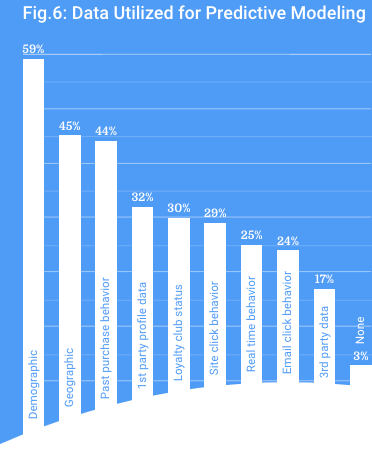
Source: The Relevancy Group Executive Survey 2017
Predictive metrics will give marketers the ability to up their personalisation game with data that will drastically improve relevance, and in turn, response rates.
6. Multi-channel marketing is a priority
To improve customer engagement and ensure compliance with the general data protection regulation, it is important for marketers to understand where their audience is located. In today's digital-dependent world, customers are spread across multiple channels, including social media platforms, live video streams, real-time news feeds, and shopping apps. In order to effectively reach customers across these channels, email automation can be a powerful tool.
On the other hand, to maximize the marketing dollar, marketers have to own multi-channel marketing like never before, says Enchant's Philip Storey. You'll have to know what platforms your audience uses and create campaigns that speak specifically to that niche at every step of the customer journey.
It's not about focusing on new customers and existing ones anymore, it's about knowing where each subscriber is in the new marketing funnel and creating strategies that embrace a variety of digital channels from email to paid seach.
Wrap up
In 2023, email marketing strategies are expected to become more personal, relevant, and tech-savvy, with the rise of interactive emails and the use of customer data platforms. To achieve the best response rates possible, marketers must recognise the importance of personalisation and embrace these tools to create tailored campaigns that engage their audience effectively.
Holding on to old school methods like email blasts or manually mining data for insights is no longer sustainable. To thrive, marketers must embrace what subscribers want and that's relevant and targeted email messages.
